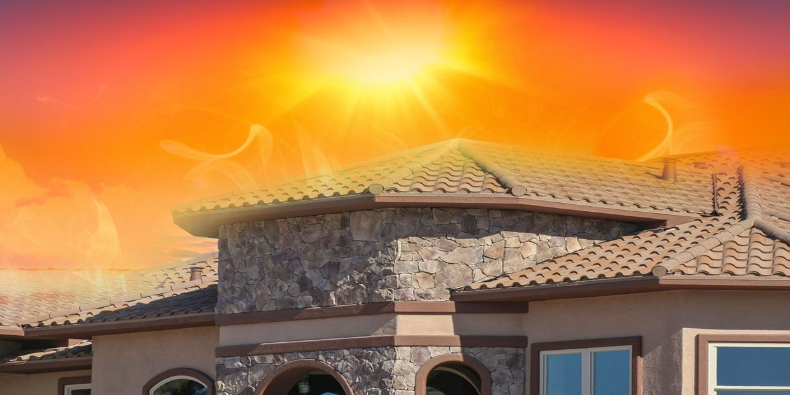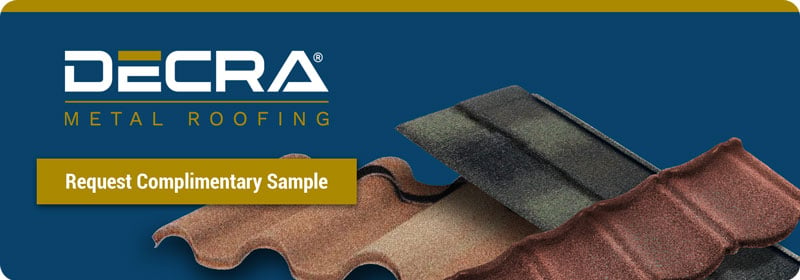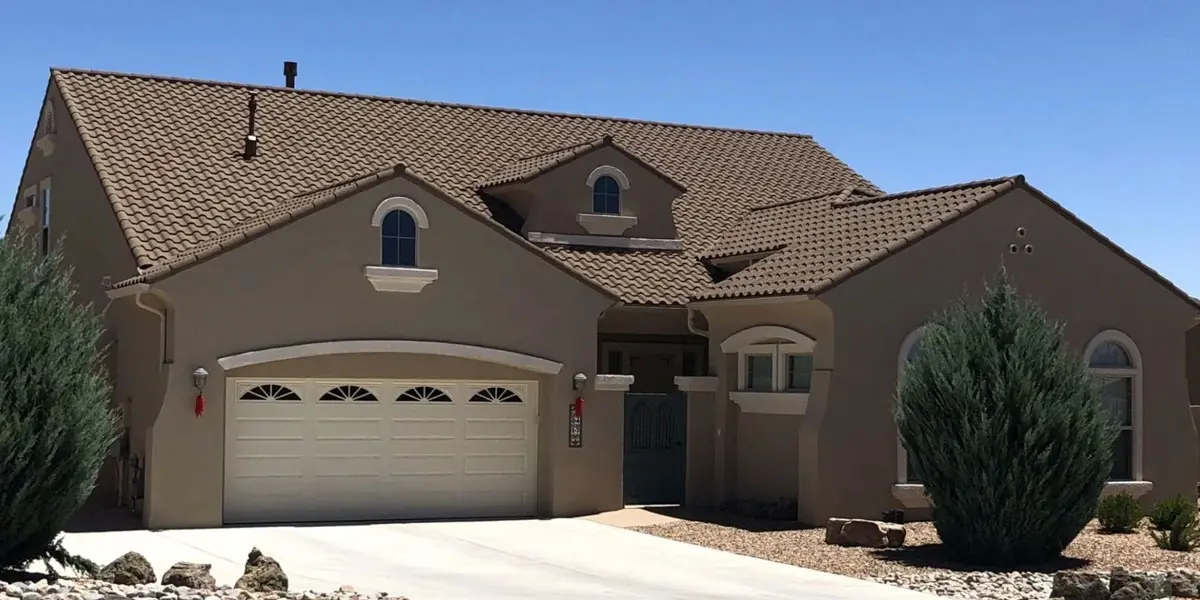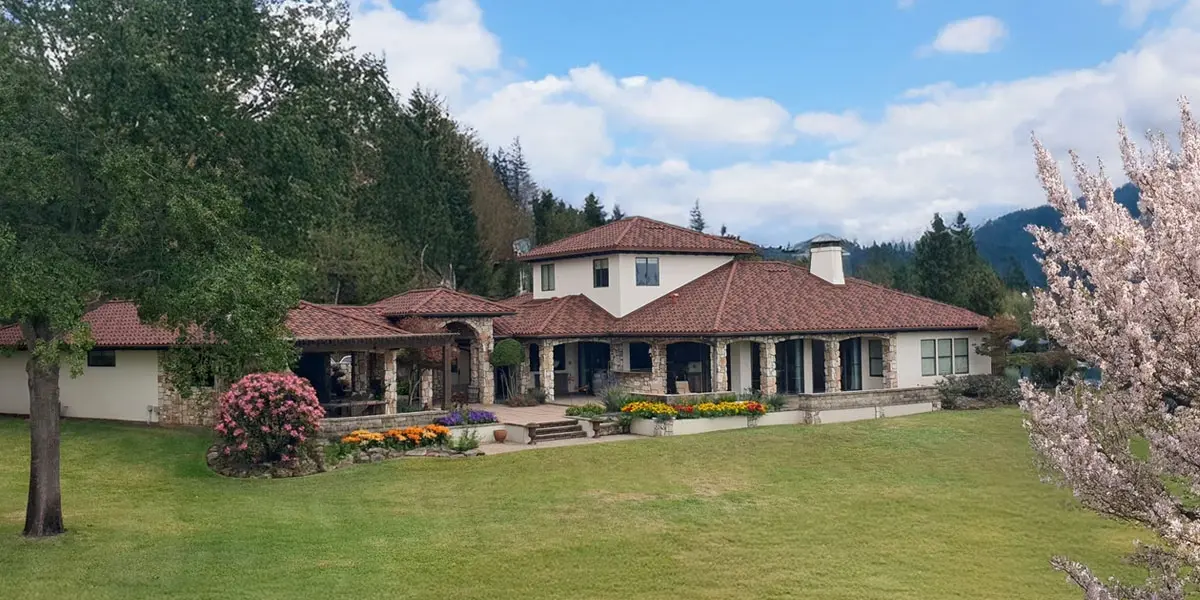Since the roof is exposed to the sun more than any other part of the home, it plays a crucial role in regulating temperature and the home’s overall energy efficiency.
As energy costs continue to rise, metal roofs have emerged as the top choice amongst homeowners in search of energy-efficient solutions for their homes–and for good reason.
Metal roofs are one of the most energy-efficient roofing materials on the market because they reflect heat up and away from buildings. In fact, a metal roof can save homeowners up to 40% in energy costs.
In this article, we’ll cover everything homeowners need to know about energy-efficient metal roofing, including:
- What is metal roofing?
- What makes metal roofing so energy efficient?
- Are metal roofs compatible with solar?
- Are metal roofs environmentally-friendly?
What is Metal Roofing?
Metal roofing is the second most popular roofing material in the U.S. and growing in market share year-over-year due to its superior durability, longevity, energy efficiency and high ROI.
There are several types of metal roofing, including aluminum, copper, corrugated, standing seam and stone-coated steel.
While metal roofs have been used in the industrial sector for centuries, they weren’t widely accepted by the residential sector until stone-coated metal roofing was introduced in 1957.
Stone-coated metal roofing gave homeowners the industrial strength of metal roofing without the industrial appearance.
Stone-Coated Metal Tile Roofing
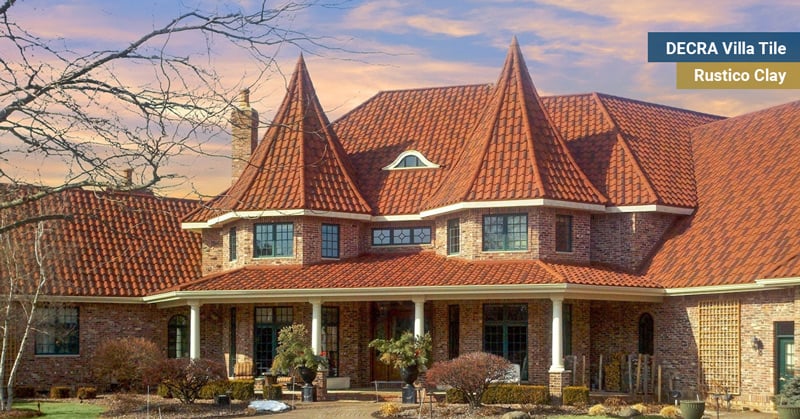
Stone-Coated Metal Shingle Roofing
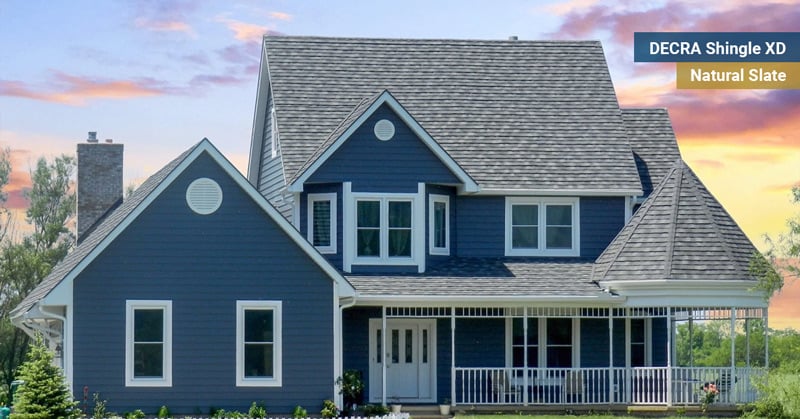
Stone-Coated Metal Shake Roofing
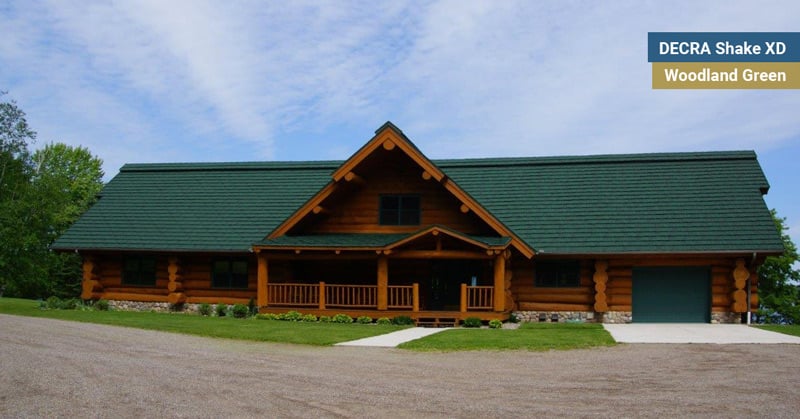
What Makes Metal Roofing so Energy Efficient?
An energy-efficient roof must perform well in all three of these categories:
- Reflectivity: The ability of the roof to reflect heat back to the direction from which it came.
- Thermal Emittance and Emissivity: While thermal emittance and emissivity both measure how well the roof’s surface can cool down, they aren’t the same. Thermal emittance is specifically related to the roof’s ability to cool itself by emitting thermal radiation, whereas emissivity is a measure of how well the roof can release absorbed heat back into the environment.
- Ventilation: A well-ventilated roof allows hot air to escape while promoting the flow of cooler air.
Metal roofing checks all three of these boxes with ease. Here’s why.
Reflectivity
A reflective roof minimizes heat absorption while maximizing the reflection of sunlight.
Cheap or low-quality roofing materials, such as traditional asphalt shingles, have extremely poor reflectivity and absorb heat like a sponge.
Metal roofs, on the other hand, are highly reflective and can reflect up to 70% of the sun's energy back into the atmosphere. And since a metal roof reflects heat up and away from the home, less heat is absorbed by the roof, and the home stays cooler.
Thermal Emittance and Emissivity
Thermal emittance measures how efficiently a roof can release the heat it has absorbed. The higher the emittance, the better the material can release heat.
Metal has an extremely high rating for thermal emittance due to its unique atomic structure. Metals are made of atoms that are arranged in a lattice structure with free-flowing electrons that can easily move and transfer energy within the material. The free-flowing electrons are responsible for the high conductivity of metal and its ability to effectively transfer and emit thermal energy.
The high conductivity of metal also makes metal roofs highly emissive. When the metal roof is heated by the sun, the heat energy quickly spreads across the surface and emits the heat back into the atmosphere.
Ventilation
A properly ventilated roof system allows hot air to escape while promoting the flow of cooler air. Installing a roof on battens creates an air gap between the roof and the metal panels, allowing for ventilation and air circulation. This ventilation above the roof’s sheathing prevents heat from building up in attics or ceiling areas.
Asphalt shingles and wood shakes are installed directly on the underlying plywood. With no airspace below the roofing materials, heat from the sun is trapped below the roof, increasing HVAC costs and reducing the overall energy efficiency of the home.
Since metal roofs are often attached to the roof using a batten system, the air is able to easily flow under the roof.
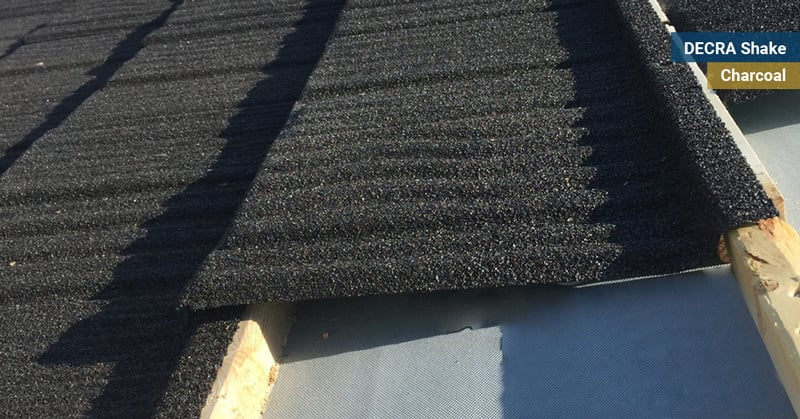
For intricate roof designs that would be complicated by the raised batten grid. However, metal roofing products–such as DECRA’s direct-to-deck products–are engineered to include a critical ¾” airspace. This allows for energy-saving airflow that supports a consistent temperature throughout the entire roof.
For example, when compared to asphalt shingles, DECRA direct-to-deck products improved energy efficiency by 30.3%. DECRA products that are installed on battens increased energy efficiency by up to 48.7% when compared with asphalt shingles.
Are Metal Roofs Compatible with Solar?
Metal roofing is the perfect pair for solar panels. The main reason being that metal roofs are durable enough to outlast solar panels, which can last for 25 to 30 years.
Asphalt shingles, on the other hand, need to be replaced as often as every 12 years. This creates a problem because the asphalt shingles would need to be replaced long before the solar system. And removing and reinstalling the solar system costs money.
Unfortunately, asphalt shingles have other issues when it comes to solar compatibility.
Solar panels are heavy–and so are asphalt shingle roofs. When solar panels are installed over a heavy roofing material like asphalt shingles, additional construction or reinforcement of the roof deck may be required to support the combined weight.
As one of the lightest roofing materials, a metal roof can easily support the weight of solar without any additional construction.
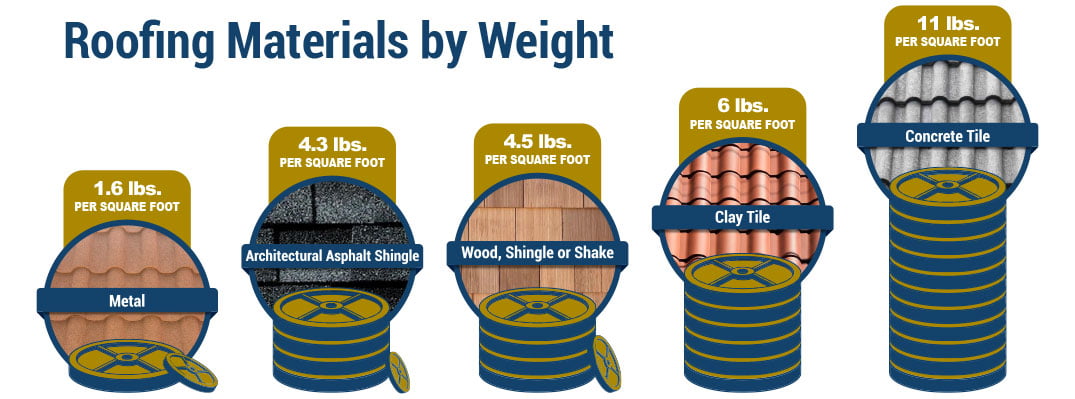
Are Metal Roofs Environmentally-Friendly?
In addition to being one of the most energy-efficient roofing materials, metal roofing has a long list of other environmentally-friendly benefits.
Unlike petroleum-based asphalt shingles which contribute 11 million tons of waste to landfills each year, metal roofs are 100% recyclable at the end of their lifespan.
Asphalt shingle recycling is limited due to regulatory concerns and environmental impacts, such as asbestos presence. In contrast, metal roofs are extremely durable but also one of the most lightweight roofing materials, allowing for metal roof installations over the existing roof which reduces the need for disposal of the old roof.
Lightweight metal roofing also requires less structural support, which helps to conserve natural resources like lumber for framing and decking.
Energy-Efficient DECRA Metal Roofing
As the original manufacturer of stone-coated metal roofing, DECRA Metal Roofing products have withstood the test of time since 1957. If you’re looking for a durable, long-lasting and energy-efficient roof for your home, you’re looking for a DECRA roof.
Ready to see and feel the DECRA difference? Request a complimentary sample today.
Editor's Note: This blog was originally published in July of 2020, but has been updated with relevant information.

